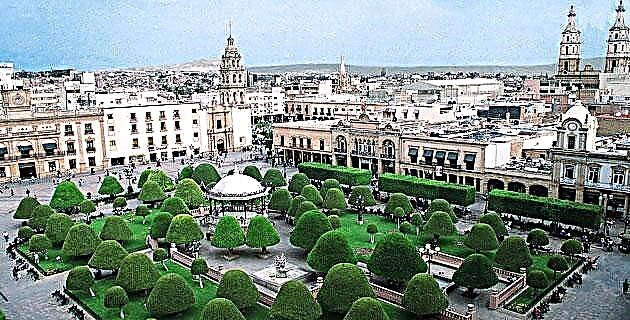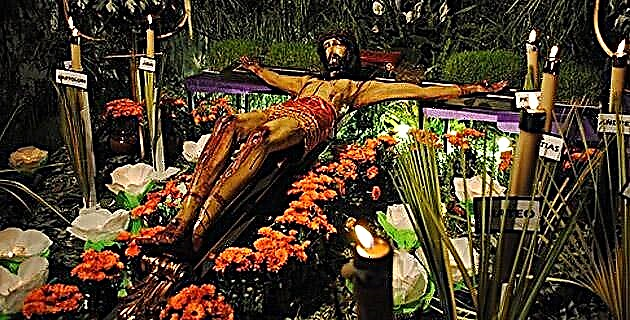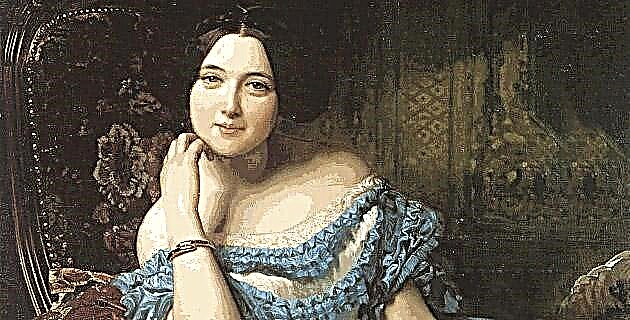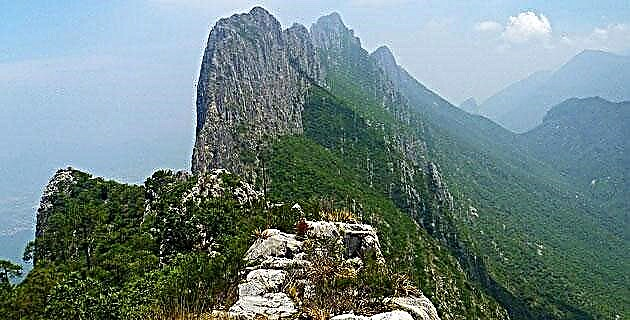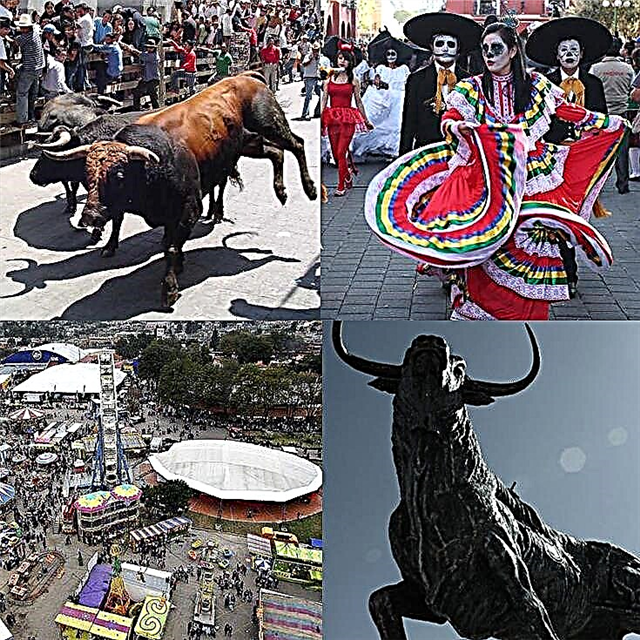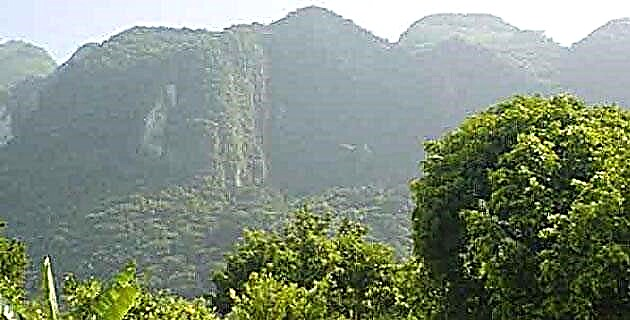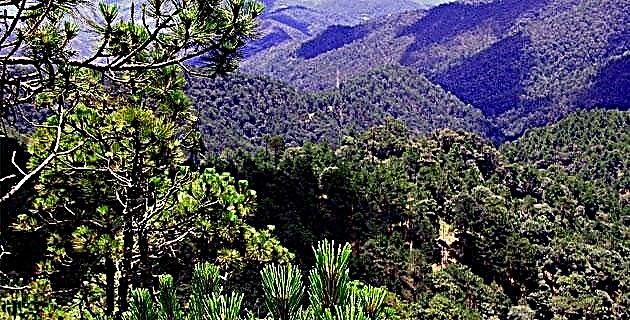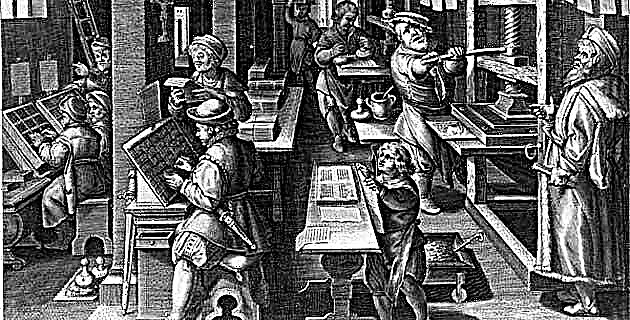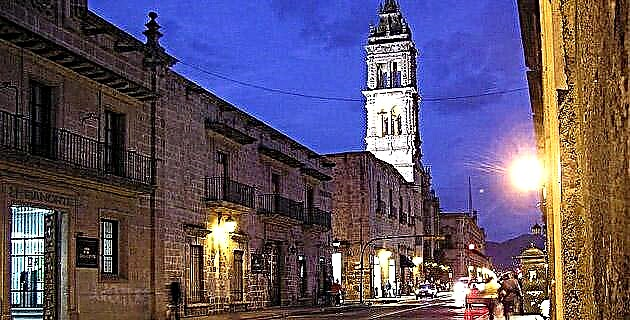
I am going to say what is always yours: that deep garden where you hang, tame limes, and luminous footsteps, and the wind in a lullaby sound. Let the others be proud of who you are; but I, in your outraged stillness and in your fresh slices of shade and sun, Valladolid, I sense you. Baroque and monolithic, resting there, barely tangent, by the charisma of time and settled on your tiles. of her roses, forgotten about everything and yourself.Francisco Alday
Morelia, located on a gentle hill in the Guayangareo valley, in the former dominions of the Pirindas indigenous people, was solemnly founded on May 18, 1541, in compliance with a provision that the first viceroy Antonio de Mendoza issued on April 12 of that same year, for having found in this place, "the seven qualities required by Plato to found a city." The new city absorbed the town where the friars Juan de San Miguel and Antonio de Lisboa had grouped the indigenous converts around their little Franciscan chapel.
The city was baptized with the authentic name of Valladolid, which it kept until, after Independence, the Second Constitutional Congress decreed on September 12, 1828, that the city change that name to Morelia, in honor of his worthy son. , General Don José María Morelia.
Morelia has managed to preserve its colonial appearance in the majesty and elegance of its buildings and churches and in the secular atmosphere of calm and tranquility in many of its corners.
A city of ashen coral, said the Chilean poet Pablo Neruda, from Morelia; expression that is confirmed in the distance from the many places where you can enjoy its beautiful panoramic views.
Centuries of stillness accumulated in the atmosphere are ideal proportions observed for a city by the first viceroy of New Spain, Don Antonio de Mendoza. The limits of the old Valladolid have been freely crossed, but its center preserves the colonial flavor in streets and houses, silent witnesses of centuries that with nobility still offer us the caress and charm of tranquility.
Morelia, recreation in quarry, a place where looking over its extension reveals the privacy of its former inhabitants, windows and balconies in which the only witnesses and sentinels are its shutters.
Streets and roofs; rusted roofs that from Santa María de Guido vibrate and revive with the green of spacious squares or charming gardens; and also, why not, in the sunny patios and macheros that maintain old fountains and arches, in addition to the whisper produced by the wind when swaying grapefruit, lemons, pines, ash trees and even cedars or some araucarias. In the distance, Morelia is seen with sparkles produced by gems or emerald green.
When you walk through the city center to any point, you will find beautiful and harmonious facades of buildings of sober Baroque architecture: family houses that from the outside allow us to glimpse large patios, arcades, fountains and greenery of plants in bulk, which accompany trills of birds.
Houses in whose windows at sunset, it is sometimes seen, women who in the old fashion embroider fabrics and dreams. Images that are lost with the passing of time and the rush of modern life.
Like all convents, the ex-convent of San Agustín is not the exception as it keeps countless legends, but the one that refers to Fray Juan Bautista Moya, at that time "refitolero" of the convent, stands out, who was so solicitous and careful in endeavoring to his work, for which the whole community was truly grateful. Only once did the Father Prior have to reprimand him harshly, because he had distributed all the bread to a crowd of hungry poor men who were waiting for him at the gate. The prior irritated by such a regrettable event, since the friar had left the workers without eating, he blamed his wrongdoing on him by preferring the unemployed. Afflicted, the holy man begs the superior to allow him to go to the pantry to see if there was any bread left over to bring it. He knew well that not a single piece was left; But with great faith in God, she goes to the pantry and soon returns with a large basket overflowing with the magnificent food. To the great astonishment of the Father Prior and those who witnessed the event, the superior confessed, astonished, that this unusual event should be described as miraculous.
On the side of this convent and under beautiful arches the real typical snacks have been installed. Night after night Morelians gather to enjoy chicken with enchiladas, corundas, atole, buñuelos, sopecitos and a thousand other delicacies from Michoacan and Mexican cuisine.
These arcades that replace the populous market that covered the factory of the temple and convent with its openings, now allow us to enjoy the beauty of this architectural jewel.
Morelia, our beloved city, offers us much more than what appears in these images. The cordial simplicity of its inhabitants, the exquisiteness of its sweet traditions, cannot be described, they must be experienced, lived, savored.
When walking through its streets, not only are its beautiful buildings and its imposing churches, you also enjoy the laughter of children; the coming and going of its inhabitants and the rhythm of the birds and the scent of the flowers, which come out of the doors ajar or open and which permeate the atmosphere of its gardens and patios.
IF YOU GO TO MORELIA
Exit west of Mexico City on highway no. 15 towards Toluca, passing through La Marquesa. In Toluca there are two ways to get to Morelia: by federal highway no. 15 or by highway no. 126. Morelia is connected to the center and borders of the country by a vast network of highways; It is integrated into the rail and air network. It can be reached from the cities of Mexico, Uruapan, Lázaro Cárdenas, Acapulco, Zihuatanejo, Guadalajara, Monterrey and Tijuana, and from Chicago, San Francisco and San Antonio, in the United States.

